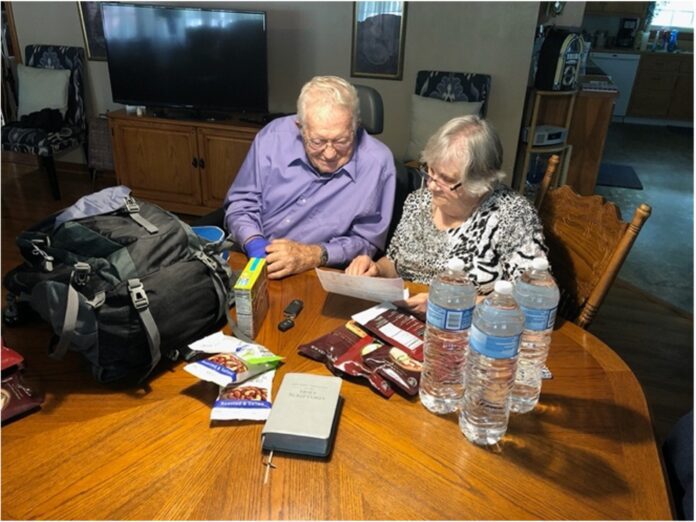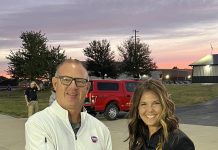
Flashlights, jugs of bottled water, a first aid kit, and ready-to-eat meal packs line the Scharff’s living room floor. The family isn’t going camping—they’re preparing for disaster by putting together a “go bag.”
Kim Scharff never used to worry about natural disasters in their southwest Missouri town of Carthage, but after the hurricanes, tornadoes, and ice storms of 2020, she didn’t want to leave anything to chance. In addition to making her own preparations, Kim also assists her elderly parents, John and Carol Stark, to prepare go bags for emergencies.
Preparing in advance with a disaster-ready kit has helped families nationwide through extreme and abnormal weather events, which experts warn are on the rise.
“Having a personal preparedness plan increases your chances of staying safe,” according to a training program from the Columbia University’s National Center for Disaster Preparedness.
Jolted awake by a neighbor’s urgent knocking, Aaron and Jacqueline Pate were horrified to see the encroaching flames of the fast-moving Woolsey fire that had been miles away when they went to bed. It burned to within 100 feet of their Westlake Village home in 2018 as part of California’s deadliest wildfire season on record.
“Because we had go bags, we weren’t running around trying to pack things at the last minute,” said Jacqueline. “We had the time we needed to comfort our kids and get everyone safely into the car.”
The Pates credited the disaster-preparedness help they received as Jehovah’s Witnesses, both through periodic reminders at their congregation meetings and from tips for putting together go bags on the organization’s website, www.jw.org.
“Life is precious, so we encourage all to heed the Bible’s advice to take practical steps to protect ourselves from danger,” said Robert Hendriks III, spokesman for Jehovah’s Witnesses in the United States.
Go bags also have proven useful in the opposite circumstances as “stay bags.”
When February’s Winter Storm Uri left millions of Texans without heat, electricity, and running water, many go bags there saw their first-ever use outside of hurricane season.
Houston residents Dan and Rhiannon Muey’s advance preparation enabled them to shelter in place for days, even as many in their area braved treacherous road conditions to scour barren store shelves for supplies.
“Our hurricane ‘go bags’ became our winter storm ‘stay bags,’ but we were so glad we had them,” said Dan. “Instead of waiting in lines for hours to get basics like drinking water, we already had what we needed.”
The Gauthier family regularly sit down to review and replenish the family’s emergency supplies. Their efforts paid off last August when Hurricane Laura hit them in Lake Charles, Louisiana.
“Having our go bags allowed us to act faster,” said father-of-two Matthew. “If we had to start from scratch, it would’ve slowed us down a lot.”
Disaster-preparedness suggestions and tips for putting together a go bag are available from FEMA at ready.gov and from Jehovah’s Witnesses at https://www.jw.org/en/library/magazines/awake-no5-2017-october/disaster-steps-that-can-save-lives/.















